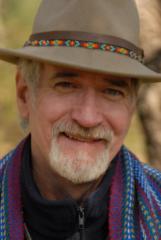“It is in dreams that the pure sacred life is entered, and direct relations with the gods, spirits and ancestral souls are re-established. It is always in dreams that historical time is abolished, and the mythical time is regained.”
-Mircea Eliade, Shamanism: Archaic Techniques of Ecstasy, p.103
“In the Huichol tradition dreams are the re-emergence of our true life. We say that at night, we die. You go to the Great Spirit, to the realm of light, and you are on your way to being reborn. And on your way…is when we dream. …Generally, we tell our dreams to the fire every morning. We wake up and make a fire. The fire (and its spirit Tatewari) is helpful in remembering the dream. …If anyone is interested in shamanism—they have to be interested in dreaming. You can’t separate them. Dreaming is an integral part of my work.”
-Brant Secunda, Dream Network, Vol.12, No.4
“People who grow up in shamanic traditions regard their dreams and visions as valuable sources of knowledge and develop techniques that may be different for men and women.”
-Barbara Tedlock
“Many societies hold that dreams represent the soul’s nocturnal voyage, and some believe that it is vulnerable to abduction by a witch, or sorcerer, or malevolent spirit during night-time dreaming.”
-Stanley Krippner
The Earth has grown us fine bodies and a central nervous system fit for dreaming. From a shamanic point of view, everything is dreaming and seeking to manifest dream, one way of another, including the heart of each creature. C.G. Jung once said “Everything living dreams of individuation, because everything wants to become what it is.”
This fall we are beginning a new cycle of teachings on the theme of shamanic dreaming and dream work, as a part of shamanic path practice and shamanic counseling. So much of the literature on shamanism has focused on the dramatic elements of shamanism, especially shamanic ecstasy, which is important in opening us to fresh perspectives and visionary experience, but those themselves are forms of shamanic dreaming, and there are so many approaches to dreams coming from nature-based indigenous cultures. A big part of the function of shamanic healers is asking about, and working with the dreams of patients and the community, for guiding signs and omens, and diagnostic clues to health problems and even in finding and recovering lost soul, and discovering the sacred purpose of a life. There is a sense in which each shamanic activity is itself some form of dreaming activity, awake or asleep, intentional and active, or passively received as a gift. The shamanic journey is a form of wakeful active entry into Dreamtime. Even the plant medicines produce a species of intense and vivid waking dreaming, think of “ayahuasca dreaming.” Our sacred breathwork™ part of our Crows Nest workshops, is another species of active dreaming in deep trance states. Driven by ecstatic and numinous music and connected breathing.
There are so many approaches to dreams beyond those of the Western psychological traditions. Hundreds of approaches come from indigenous, Nature-based societies. The Maricopa find in unpleasant dreams helpful info about sources of sickness. Zambian shaman’s believe they can derive power for diagnosis and curative treatment through dreaming. The Inuit shamans are called by the spirits, and Australian shamans may use the Dreamtime for purposes of hunting. The Iroquois shamans long before Freud, saw a connection between dream and desire, and saw unfulfilled dreams of the heart as a source of symptoms and sickness. The patient’s dreams were used as clues for the shaman, of what was necessary to restore balance and health in a particular patient’s life, and in ways consistent with communal-tribal structure.
C.G. Jung’s life and work is strongly shamanic in character, and he made the effort nearly a hundred years ago to learn from shamans in North Africa and North America about their dreams. Dream of the night and waking dreams (active dreaming) played a huge role in his own initiatory crisis, out of which a lifetimes work emerged. Through his emergence in the dream-field he discovered his sacred purpose, and vehicle as a pioneer dream psychologist, and spent the rest of his life delivering this gift to Western civilization.
In our next cycle of Crows Nest workshops and retreats, we will be exploring shamanism from the point of view of dreaming, as part of our path and daily practices, as a way of understanding sacred ceremony, rites of initiation, vision questing, and shamanic counseling. We will be learning and integrating shamanic practices, and ways of working with clients and their dreams within the perspective of dream shamanism. Shamanic counseling dyads and group dream-work will offer opportunities to hone and expand dream-work skills, and deepen shamanic capacities. As usual, our workshops and retreats take place in a context of rich supportive community, sacred ceremonial context, and offer purification rites, sacred fire and story telling, sacred breathwork™ and trance-dancing—a cornucopia of heart-based and Earth-honoring wisdom. Those who complete the two-year cycle will receive a Crows Nest Certificate in “Shamanic Dream Counseling.” But whether you seek a certificate or not, the program is open to all, and is a great place to begin an apprentice program of shamanic studies.
In this cycle of workshop, supportive and helpful readings can be found in the following books C.G. Jung, “Memories, Dreams, Reflections,” Eugene T. Gendlin, Let Your Body Interpret Your Dreams (Chiron Books), and the work of Robert Moss, especially “Dream Gates,” (available as audio recording with Sounds True). My book, “Jung and Shamanism in Dialogue” explores connections between “Active Imagination,” the “collective unconscious and the shamanic spirit world.”
More: About Mikkal


Miachel Love your Work….Would love to come to one of your sessions!
Blessings!
Wind
Dear Mikkal, I’m wondering whether you will be offering this particular training in France? If not, within Apprenticeship training. I’m a great dreamer & much of my personal healing work has occurred during Night-time & Waking dreams. I would dearly like to pursue this further and work with both my client’s and collective dreaming. In my present Psychotherapy training there is a short space allocated for a Dream Circle…the collective dreams in particular have been very interesting.
Thank you